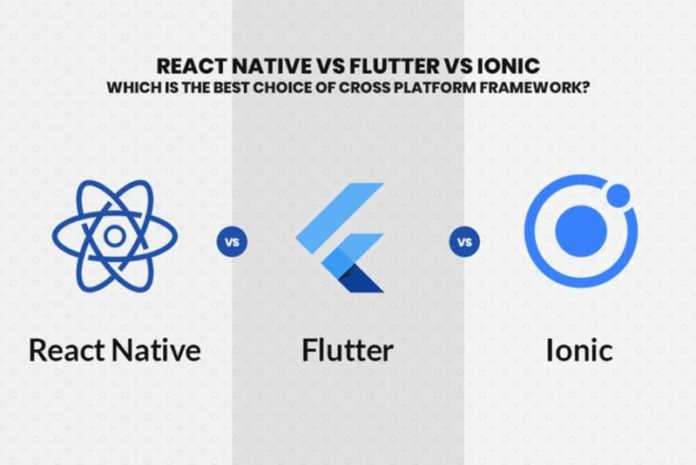In May 2017, Google launched Flutter and introduced it as a software development kit (SDK) that uses Dart as its programming language. React Native development services, on the other hand, is an SDK developed by Facebook in 2015, and the designing of the mobile applications takes place in JavaScript. In contrast to the other two, Ionic follows a different approach. Released back in 2013, with Ionic, you can create a native app using web technologies like HTML, CSS, and JSS.
-
Market and Community
Revolumizing and maintaining our ecological community is something we all need to work towards. However, which option to choose for your brand.
React Native: React Native development services are among the top competitors in the cross-platform framework community and market. Due to its vast popularity, you can find a deep pool of experienced React Native development engineers. The main advantage they utilize is the infamous React library and one of the best programming languages, JavaScript. The fantastic qualities and perks are why it has become so famous and, therefore, a relatively powerful platform.
Ionic: After React, Ionic is the 2nd best world-renowned framework. It allows developers to create native mobile apps as quickly as feasible. Ionic has vast community support and a great marketplace where you can find a lot of starters and templates to jump-start any app from Uber to Spotify.
Flutter: Flutter is a relatively new framework for the community right now, and therefore it is not very recognized as popular. However, it is advertised by Google, which showcases they want people to know of its significance. While it still has some tingle points, using it is fun, and you can go rapidly from idea to prototype to the app.
-
Performance
Can you analyze how apps made in different frameworks perform from a run-time performance perspective?
React Native development: It works a lot like Native applications as it provides code elements, particularly to the Native APIs. React also allows developers to write code for complicated operations and use native modules written in native languages. However, you cannot reuse them across two platforms; their primary purpose is to improve their performance results.
Ionic: When it comes to performance results, Ionic falls behind. Its performance isn’t similar to React Native development or Flutter offers since it utilizes web technologies to design an application. This approach significantly decreases the speed. Also, it does not use native components and web technologies to develop a native-like look for its application. However, it may work slower than the other two but runs smoothly on a browser and showcases the development process.
Flutter: In comparison over performance, Flutter takes the lead. That advantage is linked to its programming language, Dart, and there is no JavaScript bridge for starting interactions with the device’s native components; the speed it offers is impressive.
-
Do not repeat yourself (DRY)
If you want to explore how much of the code you write can be reused for both platforms with this metric.
Ionic: It’s incredibly reusable! You may easily reuse your code thanks to the wrapped web app approach. The excellent component library of adaptive components automatically styled for the app’s platform also helps.
Flutter: This platform also has the fantastic ability to reuse. You can utilize Material Design on both platforms by default as the widget it ships usually do not adapt to the underlying platform. The Flutter team provides more and more iOS-styled components, though. You can find out which platform you’re running and manually swap widgets, but that’s more work than Ionic requires.
React Native: It also compiles to native defaults but only provides a basic set of components. If you opt for React Native development, you would have to style most of them independently. Therefore extra work is required to achieve appropriate styles on both platforms. Generally, you can reuse code since you still only use one language, and libraries like Redux need no adjustment.
-
Popular Apps
React Native: It is used by Facebook, Instagram, UberEats, and Airbnb
Ionic: This framework has been used by JustWatch, Pacifica, Nationwide, etc.
Flutter: Hamilton uses Flutter
-
Pricing
React Native and Flutter: They are entirely open-source frameworks which means they are easy to use and publically accessible. Therefore, engineers can utilize their systems and their libraries for free.
Ionic: Although Ionic is also a free, open-source framework for developing cross-platform mobile applications, the company’s Pro Development Environment is paid. The company guarantees that Ionic Pro accelerates the development process.
Read More: Flutter vs React Native – What to Choose in 2022?
Ending Note
Ionic is famous for its easy learning curve due to web technologies, while Flutter requires developers to learn Dart to build apps. Also, Ionic is not preferable for intense graphical apps or game development because wrapper plugins sometimes cause performance issues. Although Flutter is relatively new, it is gradually growing with the support of Google’s skilled programmers. According to Statista, React Native is used by 42% of developers, whereas Flutter, despite being a new framework, is used by 39% of developers, and Ionic is used by 18% of developers.
Every framework works best in its capacity but choosing a company to represent your needs, you need to analyze various factors like time, application size, and operating systems.












